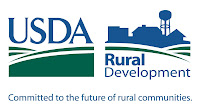CONGRESS PASSES TAX CREDIT CLOSING DATE EXTENSION!!!

The US Senate voted unanimously to extend the tax credit closing date and the National Flood Insurance Program (NFIP) to September 30. According to the National Association of REALTORS, "After a close brush with the deadline, Congress has passed an extension of the Homebuyer Tax Credit closing deadline, the Homebuyer Assistance and Improvement Act (H.R. 5623)". The extension applies only to transactions that have ratified contracts in place as of April 30, 2010 that have not yet closed. The legislation is designed to create a seamless extension - the new closing deadline for eligible transactions is now September 30, 2010. This will allow transactions to move forward. The bill is retroactive and covers the lapse period from June 1, 2010 to the date of enactment of the extension.







